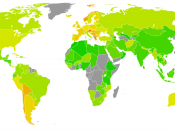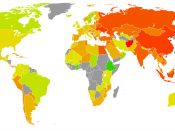Tobacco smoking, using both pipes and cigars, was common to many Native American cultures of the Americas. It is depicted in the art of the Classic-era Maya civilization about 1,500 years ago. The Mayans smoked tobacco and also mixed it with lime and chewed it in a snuff-like substance. Among the Mayans tobacco was used as an all-purpose medicine, and was widely believed to have magical powers, being used in divinations and talismans. It was also burned as a sacrifice to the gods; a tobacco gourd was worn as a badge by midwives.
On October 12, 1492, Christopher Columbus was given "certain dry leaves" by the Arawaks, but threw them away. Rodrigo de Jerez and Luis de Torres, who had erroneously been searching for the Khan of Cathay in Cuba, were the first Europeans to observe smoking, and Jerez also became the first recorded smoker outside the Americas. His neighbors in Spain were so frightened by the smoke billowing from his mouth and nostrils that they alerted the Spanish Inquisition, and Jerez was imprisoned for seven years.
By the time he was released, smoking had become fashionable in Spain. In 1497 Ramon Pane who had been on the second voyage of Columbus describes the native use of tobacco in De Insularium Ribitus. Columbus in 1498 named the island of Tobago after the native tobacco pipe. Throughout the 16th century, the habit of smoking spread mainly among sailors. It was introduced to England by the crew of Sir John Hawkins in the 1560s. In 1559, Francisco Hernandez de Toledo introduced the plant to the court of Philippe II where it was at first only grown as an ornamental plant. Tobacco made an impact on European society only from the 1580s; in England, some returning Virginia colonists in 1586 caused a sensation...


